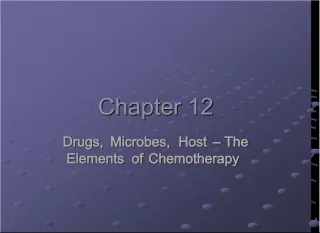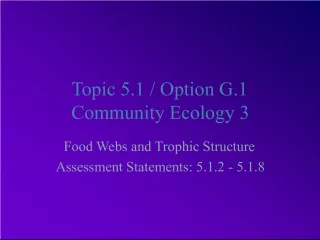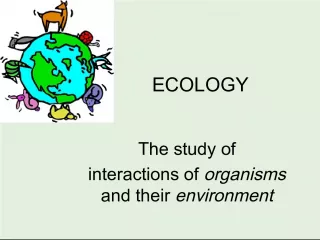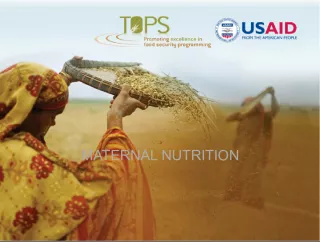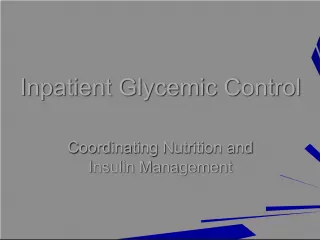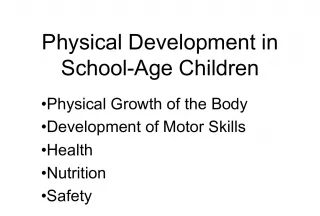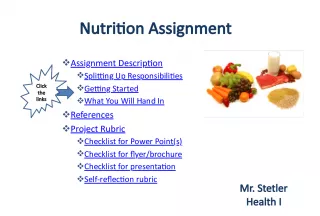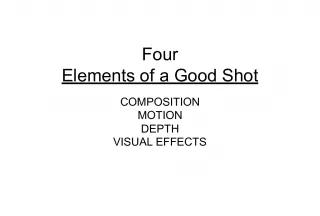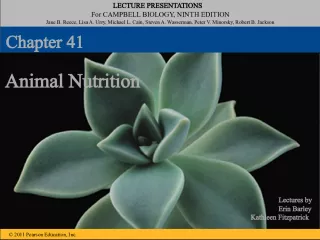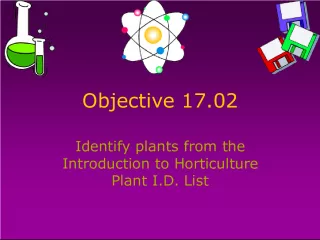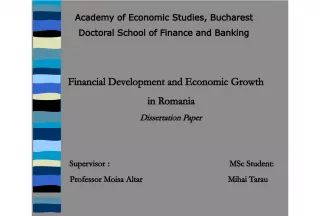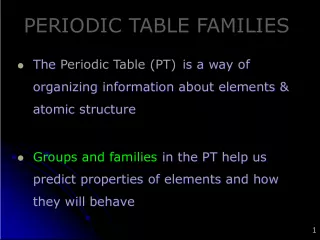Elements of Microbial Nutrition, Ecology & Growth
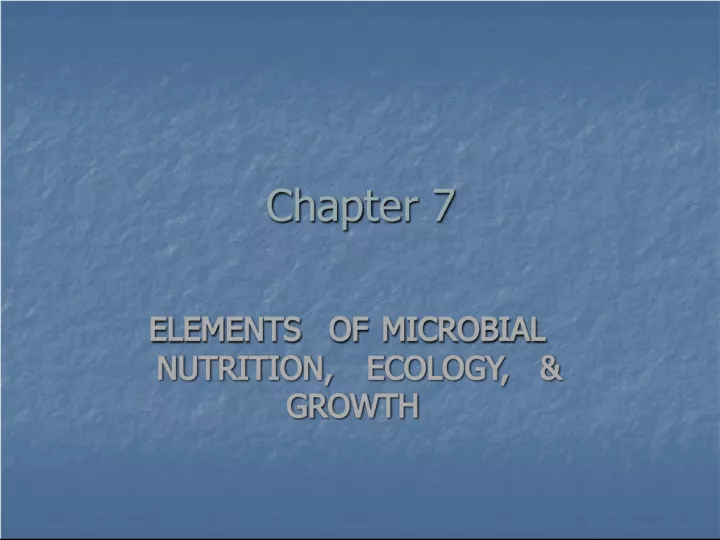

In Chapter 7, the book discusses the various sources of nutrition for microbial organisms. Microbes require certain chemical substances, known as nutrients, to assimilate and extract energy from them
- Uploaded on | 0 Views
-
 cemre
cemre
About Elements of Microbial Nutrition, Ecology & Growth
PowerPoint presentation about 'Elements of Microbial Nutrition, Ecology & Growth'. This presentation describes the topic on In Chapter 7, the book discusses the various sources of nutrition for microbial organisms. Microbes require certain chemical substances, known as nutrients, to assimilate and extract energy from them. The key topics included in this slideshow are . Download this presentation absolutely free.
Presentation Transcript
Slide1Chapter 7 Chapter 7 ELEMENTS OF MICROBIAL NUTRITION, ECOLOGY, & GROWTH ELEMENTS OF MICROBIAL NUTRITION, ECOLOGY, & GROWTH
Slide2Microbial Nutrition, Ecology & Growth Microbial Nutrition, Ecology & Growth Sources of Nutrition - Nutrition consists of taking in chemical substances (nutrients) and assimilating and extracting energy from them Sources of Nutrition - Nutrition consists of taking in chemical substances (nutrients) and assimilating and extracting energy from them Essential nutrients – substances required for survival; can be macronutrients or micronutrients Essential nutrients – substances required for survival; can be macronutrients or micronutrients Macronutrients are required in relatively large quantities and play principal roles in cell structure and metabolism Macronutrients are required in relatively large quantities and play principal roles in cell structure and metabolism Carbon - supplied in media as either carbohydrates (sugars) and/or peptones Carbon - supplied in media as either carbohydrates (sugars) and/or peptones Nitrogen, sulfur, and phosphorus - needed for proteins & nucleic acids; supplied as peptones Nitrogen, sulfur, and phosphorus - needed for proteins & nucleic acids; supplied as peptones Micronutrients, or trace elements are present in smaller amounts and are involved in enzyme function and maintenance of protein structure Micronutrients, or trace elements are present in smaller amounts and are involved in enzyme function and maintenance of protein structure Trace elements (Fe, Cu, Mg, and Zn) - needed for coenzymes; usually present in water Trace elements (Fe, Cu, Mg, and Zn) - needed for coenzymes; usually present in water
Slide3Microbial Nutrition, Ecology & Growth Microbial Nutrition, Ecology & Growth Organic nutrients contain carbon and hydrogen atoms and are usually the products of living things Organic nutrients contain carbon and hydrogen atoms and are usually the products of living things Organic growth factors - needed by fastidious (have special growth requirements) organisms Organic growth factors - needed by fastidious (have special growth requirements) organisms Essential compounds not synthesized by organisms Essential compounds not synthesized by organisms Supplied in media in purified form or as body fluids (e.g. blood, serum, etc.) Supplied in media in purified form or as body fluids (e.g. blood, serum, etc.) Examples: vitamins, amino acids, purines, pyrimidines, hemin, NAD, etc. Examples: vitamins, amino acids, purines, pyrimidines, hemin, NAD, etc. Inorganic nutrients are atoms or simple molecules that contains a combination of atoms other than carbon and hydrogen Inorganic nutrients are atoms or simple molecules that contains a combination of atoms other than carbon and hydrogen
Slide4Nutritional Categories Nutritional Categories An autotroph depends on carbon dioxide for its carbon needs An autotroph depends on carbon dioxide for its carbon needs If its energy needs are met by light, it is a photoautotroph, but if it extracts energy from inorganic substances, such as soil and minerals, it is a chemoautotroph If its energy needs are met by light, it is a photoautotroph, but if it extracts energy from inorganic substances, such as soil and minerals, it is a chemoautotroph A heterotroph acquires carbon from organic molecules A heterotroph acquires carbon from organic molecules A saprobe is a decomposer that feeds upon dead organic matter A saprobe is a decomposer that feeds upon dead organic matter A parasite feeds from a live host and usually causes harm A parasite feeds from a live host and usually causes harm Disease-causing parasites are pathogens Disease-causing parasites are pathogens
Slide5SaprobesSaprobes
Slide6Requirements for Growth Requirements for Growth Environmental factors - can be used in selective isolation Environmental factors - can be used in selective isolation Temperature - range and optimum different for each species; related to protein (enzyme) stability Temperature - range and optimum different for each species; related to protein (enzyme) stability Psychrophile (cold loving) - 5 C - 30 C Psychrophile (cold loving) - 5 C - 30 C Mesophile - 10 - 45 C Mesophile - 10 - 45 C Thermophile - 25 - 95 C Thermophile - 25 - 95 C
Slide7Requirements for Growth Requirements for Growth pH - range and optimum differ with organism; most = 6.5-7.5; buffers used in media to maintain pH in proper range pH - range and optimum differ with organism; most = 6.5-7.5; buffers used in media to maintain pH in proper range Acidophiles prefer lower pH Acidophiles prefer lower pH Alkalinophiles prefer higher pH Alkalinophiles prefer higher pH Osmotic pressure (solute concentration) - maintains water conc.; most cells require isotonic (0.9%) solutions; some can tolerate hypertonic (halophiles - e.g. vibrios & staphylococci) and hypotonic solutions; used as preservatives Osmotic pressure (solute concentration) - maintains water conc.; most cells require isotonic (0.9%) solutions; some can tolerate hypertonic (halophiles - e.g. vibrios & staphylococci) and hypotonic solutions; used as preservatives
Slide8Requirements for Growth Requirements for Growth Oxygen - requirements based on presence of catalase, peroxidase and superoxide dismutase (enzymes that handle toxic by-products) Oxygen - requirements based on presence of catalase, peroxidase and superoxide dismutase (enzymes that handle toxic by-products) Source = atmosphere or chemical (organic or inorganic) Source = atmosphere or chemical (organic or inorganic) Classification based on oxygen requirement Classification based on oxygen requirement Strict (obligate) aerobes - use molecular oxygen; have catalase and dismutase - e.g. Pseudomonas Strict (obligate) aerobes - use molecular oxygen; have catalase and dismutase - e.g. Pseudomonas Strict (obligate) anaerobes - free oxygen is toxic; use inorganic oxygen-containing salts; generally lack both catalase and dismutase - e.g. Clostridium Strict (obligate) anaerobes - free oxygen is toxic; use inorganic oxygen-containing salts; generally lack both catalase and dismutase - e.g. Clostridium Facultative anaerobes - prefer molecular oxygen but can grow without it; have catalase and dismutase - e.g. Escherichia Facultative anaerobes - prefer molecular oxygen but can grow without it; have catalase and dismutase - e.g. Escherichia Aerotolerant anaerobe - cannot use oxygen but not killed if exposed; have dismutase - streptococci Aerotolerant anaerobe - cannot use oxygen but not killed if exposed; have dismutase - streptococci Microaerophilic - grow best at low oxygen tension; lack cytochromes; lack catalase but have dismutase; Campylobacter Microaerophilic - grow best at low oxygen tension; lack cytochromes; lack catalase but have dismutase; Campylobacter
Slide9Transport Mechanisms Transport Mechanisms A microbial cell must take on nutrients from its surroundings by transporting them across the cell membrane A microbial cell must take on nutrients from its surroundings by transporting them across the cell membrane Passive transport involves the natural movement of substances down a concentration gradient and requires no additional energy (diffusion) Passive transport involves the natural movement of substances down a concentration gradient and requires no additional energy (diffusion)
Slide10Osmosis is diffusion of water through a selectively permeable membrane Osmosis is diffusion of water through a selectively permeable membrane
Slide11Form of passive transport that can move specific substances is facilitated diffusion Form of passive transport that can move specific substances is facilitated diffusion
Slide12DiffusionDiffusion
Slide13Transport Mechanisms Transport Mechanisms Osmotic changes that affect cells are hypotonic solutions, which contain a lower solute concentration, and hypertonic solutions, which contain a higher solute concentration Osmotic changes that affect cells are hypotonic solutions, which contain a lower solute concentration, and hypertonic solutions, which contain a higher solute concentration Isotonic solutions have the same solute concentration as the inside of the cell Isotonic solutions have the same solute concentration as the inside of the cell
Slide14In active transport, substances are taken into the cell by a process that consumes energy In active transport, substances are taken into the cell by a process that consumes energy
Slide15In group translocation, molecules are altered during transport In group translocation, molecules are altered during transport
Slide16Transport Mechanisms Transport Mechanisms Phagocytosis and pinocytosis are forms of active transport in which bulk quantities of solid and fluid material are taken into the cell Phagocytosis and pinocytosis are forms of active transport in which bulk quantities of solid and fluid material are taken into the cell
Slide18Microbial Growth Microbial Growth Definitions Definitions Growth - increase in numbers Growth - increase in numbers Binary fission - method of reproduction used by prokaryotes in which each cell divides; doubles population (logarithmic) Binary fission - method of reproduction used by prokaryotes in which each cell divides; doubles population (logarithmic)
Slide19Microbial Growth Microbial Growth Generation time (doubling time) - time required for a cell to divide and multiply (double) its population (20 min. - 72 hrs.) Generation time (doubling time) - time required for a cell to divide and multiply (double) its population (20 min. - 72 hrs.)
Slide20Phases of growth Phases of growth Lag - occurs at inoculation; little or no change in numbers; enzymes being synthesized and cells increasing in size preparing to divide; time increased if media is cold Lag - occurs at inoculation; little or no change in numbers; enzymes being synthesized and cells increasing in size preparing to divide; time increased if media is cold Log or exponential - cell mass and number increases in logarithmic manner; consistent rate and activity; organisms are most sensitive to adverse conditions Log or exponential - cell mass and number increases in logarithmic manner; consistent rate and activity; organisms are most sensitive to adverse conditions Stationary - population stabilizes; production = death; may be due to accumulation to toxic wastes or decrease in nutrients Stationary - population stabilizes; production = death; may be due to accumulation to toxic wastes or decrease in nutrients Death (logarithmic decline) - deaths exceed production; cells usually most resistant and often assume unusual shapes (pleomorphic) Death (logarithmic decline) - deaths exceed production; cells usually most resistant and often assume unusual shapes (pleomorphic)
